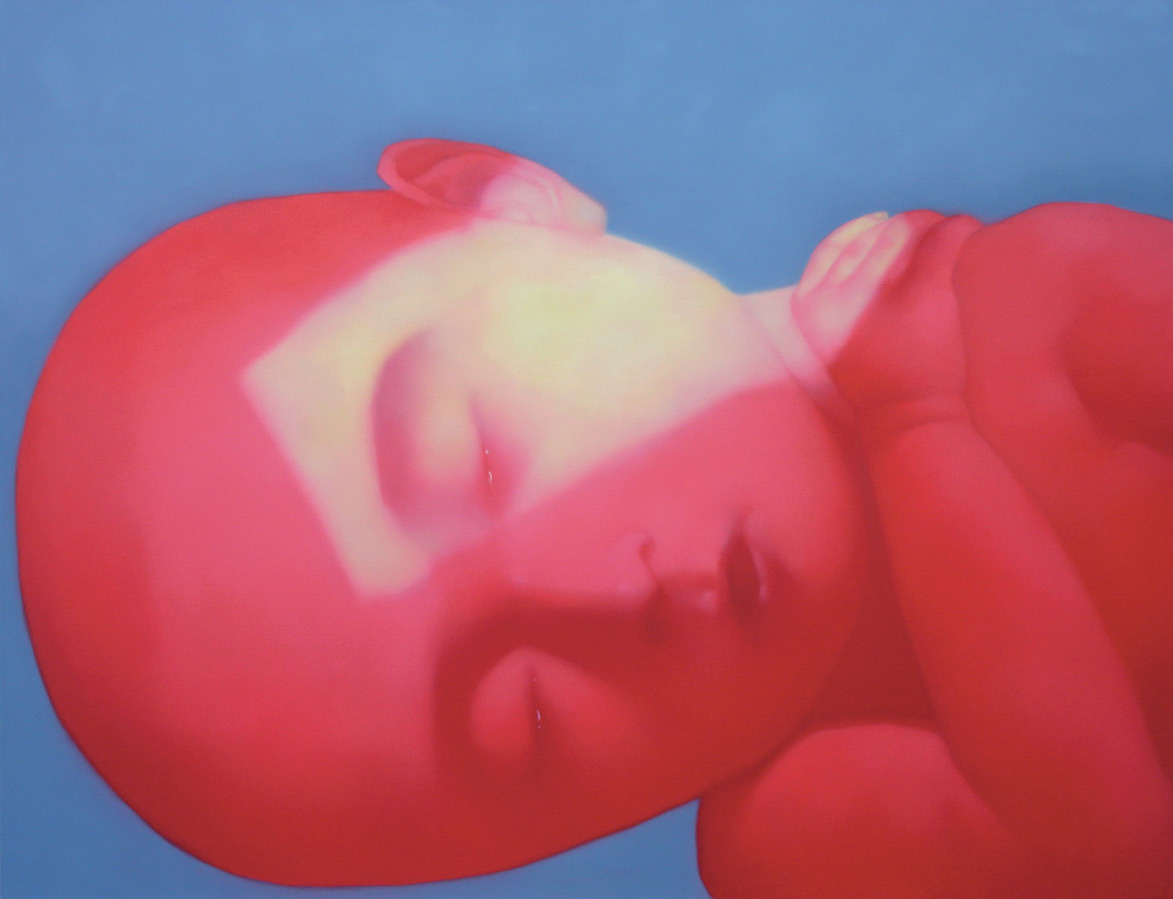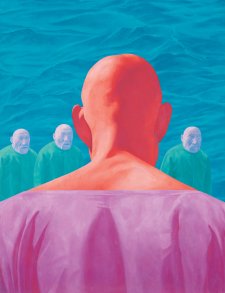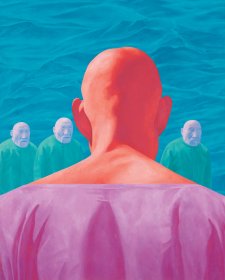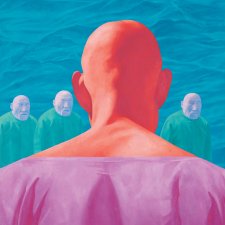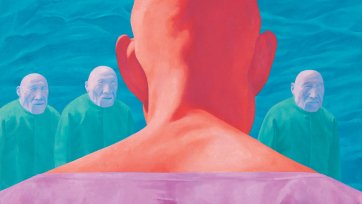“Zhang Xiaogang is a leading artist of the Chinese Avant-garde. His artistic development runs parallel to the growth of contemporary art in China — from its gestation during the Cultural Revolution and the opening up of China to the West in the 1980s, through the post-Tiananmen Square era of the 1990s and its economic boom in the twenty-first century. A practising artist for more than three decades, Zhang has experienced firsthand the many changes affecting contemporary China and he has explored these extensively in his practice.”
(Fitzgibbons)
Context and comment
“Zhang Xiaogang’s (b. 1958) child of the revolution lies asleep but disturbed, his head without pillow suspended in sky-blue space. An invasive shaft of brightness violates the infant’s soft red-toned body, to reveal a teary eye. Red child 2005 relates to the Amnesia and memory series begun in 2002 featuring close-up faces of people asleep with tears in their eyes, their faces branded with strange patches of light. These works represent a development of Zhang’s earlier Bloodline series, inspired by portrait photographs from the 1950s and 1960s, and a recognition of the inescapability of the ‘big family’, the network of familial and socio-political ties that bind people together.”
(Roberts C. , Go Figure! Contemporary Chinese Portraiture, 2012)
“With their visages masked in soft shadows and rendered slightly out of focus, Xiaogang heightens the sense of inconsequential identity; only the eyes are fully illuminated, hollow and clone-like, perfect identikit transplants hallmarking the succession of ductility over will.”
(saatchi-gallery.co.uk)
Further reading
Zhang Xiaogang: Biography
www.zhangxiaogang.org
Interview with Alice Xin Liu in The Beijinger
www.thebeijinger.com
Art’s New Superpower by Barbara Pollack
www.accessmylibrary.com
Heinrich, C. (2005). Mahjong; Contemporary Chinese Art from the Sigg Collection. (B. F. Frehner, Ed.) Germany: Hatje Cantz. pp. 154 - 156
Reifenscheid, B. (2008). China's Revision. (B. Reifenscheid, Ed., & L. C. White, Trans.) Munich, Germany: Prestel. pp. 140 - 145
Shen, K. (2008). Mahjong; Art Film and Change in China. (J. M. White, Ed.) Berkeley, California, USA: Univeristy of California, Berkeley Art Museum and Pacific film archive. pp. 68 - 72
Roberts, C. (2012). Go figure! Contemporary Chinese Portraiture. (D. C. Roberts, Ed.) Canberra and Sydney, Australia: National Portrait Gallery and The Sherman Contemporary Art Foundation.
